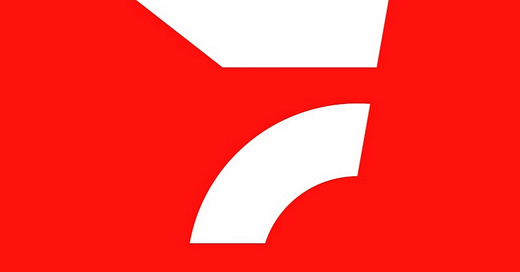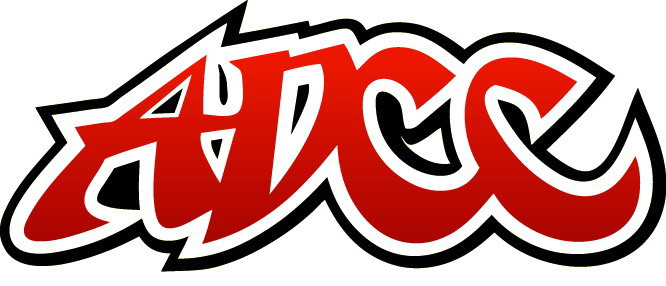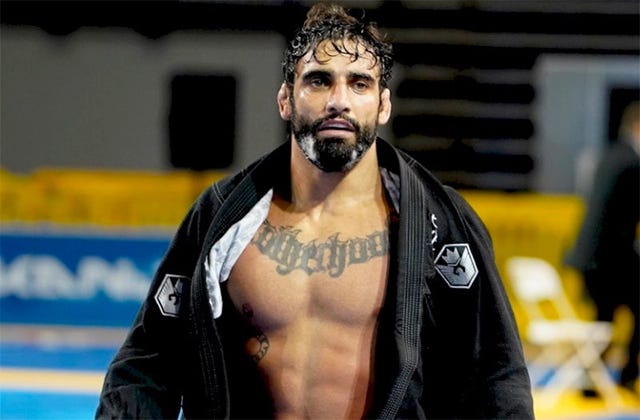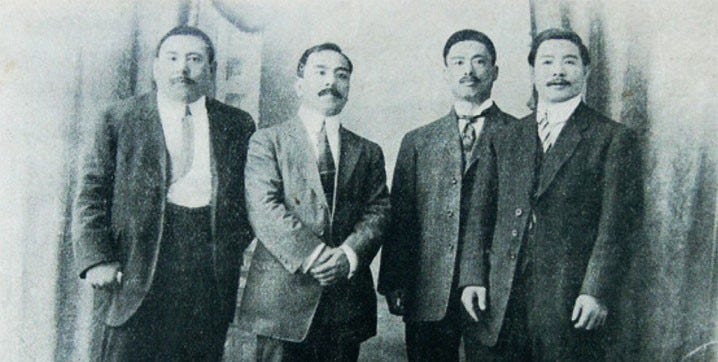The Grapple Hut Huddle March 2023
Eric gives you the March guide to grapple news, events, and a little technique discussion. There's also a history lesson.
Note: Follow more of my work on my Substack: http://grapplehut.substack.com
THIS MONTH'S BIG Grappling EVENTS
Mar 3 - IBJJF x FloGrappling Grand Prix (on FloGrappling)
Mar 11 - Polaris 23: 66kg Women’s Grand Prix (on UFC Fight Pass)
Mar 25 - Medusa 4: Flyweights (on UFC Fight Pass )
Mar 26 - Combat Jiu Jitsu Worlds: Welterweights (on UFC Fight Pass)
THE NEWS
With last month’s news that the ADCC are partnering with the live streaming services of UFC Fight Pass, there have been a few new announcements and updates. Mo Jassim, who is tasked with organizing the 2024 ADCC World Championship, announced through his Instagram, and alter through the ADCC_Official Instagram, several important things are going to change for ADCC over the next two years.
First, the 2024 ADCC World Championship is aiming to be held in a stadium and that discussions have already begun on this. The 2022 ADCC World Championship was held at the Thomas & Mack Center on the University of Nevada, Las Vegas campus in Las Vegas, Nevada and was the largest arena the event was held in. In addition to this, there was also an increase in the production of the event to make it more akin to watching another combat sports event such as a MMA, boxing, or pro-wrestling show with fighter walkouts, large entrance stage, professional announcers, etc. ADCC plan to film and record a lot of footage over the next two years that will be “showing every step necessary to put on the sickest grappling show ever.”
It was also revealed that across all the ADCC Opens, which are more similar to a regional tournament just using ADCC rules, points based off your standings will be tracked. While this wasn’t directly stated why or how it will be done, it is likely to then be used to justify invitees to the ADCC Trials which are the tournaments that help determine about half the competitive pool for the World Championship.
In addition, Jassim also stated that the plan is to sell tickets to the 2024 ADCC World Championship beginning on Black Friday, but again no specifics were given at the time.
FloGrappling Class Action Lawsuit - https://grapplinginsider.com/flosports-hit-with-class-action-lawsuit-alleging-fraudulent-billing-practices/
Also this month was news that the online streaming service FloSports were named in a class action lawsuit. FloSports, who own and operate subgroups covering sports via FloWrestling, FloGrappling, FloMMA, etc. are being sued for allegedly participating in unlawful billing practices.
The suit, which was first filed in November 2022 in the U.S. District Court for the Western District of New York, is hoping to seek damages on behalf of customers who were charged for FloSports subscriptions nationwide using these alleged unlawful methods. The full complaint can be found here via ClassAction.org.
The suit alleges that the streaming platform unlawfully misled customers to believe they were being signed up for a monthly subscription, but to only then charge the customer for a year subscription. The suit also claims that FloSports unilaterally charged customers with renewals without the customer’s consent which is in violation of both federal and New York state laws. According to the suit, “over 900” complaints were filed against FloSports on the Better Business Bureau’s website alleging that the company engaged in deceptive billing practices and failure to respond to inquiries by customers about said billing practices.
This suit is still in the early stages of the legal process and will likely take several years to complete fully. At present, the court must certify the class of consumers that have been damaged by FloSports’ actions before the case can continue and move forward.
While I personally am not part of this suit, I can confirm that for the 2019 ADCC I caught this…method and immediately called FloSports’ customer support and resolved that. Then, if you may recall, for the 2022 ADCC I pointed out that the monthly option wasn’t available via FloGrappling’s website but you could sign up via FloRugby or some other platform under FloSports and pay for just a month’s subscription. It is hard to find any sympathy for FloSports being on the receiving end of this lawsuit given the litany of complaints against the company over the years, which doesn’t include these billing practices that have caught them in hot water.
Back on August 7th, 2022 the jiu jitsu community shockingly lost one of the notable figures within the competition scene with the murder of Leandro Lo. Henrqiue Otavio Oliveira Velozo, a military police officer, shot Lo following an altercation in Sao Paulo at a night club.
It was announced that the initial hearing into the murder trial, for which Velozo is facing, will take place on March 24th, 2023 following a delay in the proceedings. The delay was made by the defense claiming there was an “incompatability of dates.” The news of this delay was announced, in Portuguese, by the official Instagram account of Instituto Leandro Lo, a group aiming to aid those in need on and off the mat.
TECHNIQUE: Tozi Pass
Last month we looked at the body lock pass, a pass that I personally have been using to better be able to get past more limber opponents because I am not a fast/agile guard passer. In the past few weeks I was reintroduced to the Tozi pass, also called the Sao Paulo pass, and have opted to use it in my very small bag of tricks. Unlike the body lock pass where you want to be outside of your opponent’s guard, the Tozi pass begins when you’re in a full guard position.
Here is a quick clip of someone using the Tozi pass in a competition setting:
So what is the Tozi pass? The Tozi pass is a method of breaking from the opponents closed guard and securing, at minimum, a top side half-guard position.
Most people learn early on the “dig the elbows into the uke’s inner thigh to break open the guard” method of guard passing. The Tozi pass is similar in that the end goal is to break open the closed guard legs but rather than applying pressure to the uke’s thighs, you’re using your body (specifically your hips) to wedge them open. So, how does it work?
Rather than posturing up to then attack the guard, in the Tozi pass you find yourself leaning down almost to the point you’re face-to-chest with the uke. In some scenarios this is because the uke has an overhook on on of your arms which is forcing you down. This isn’t necessarily a bad thing. As from this position, with good shoulder placement, you can apply pressure to the uke’s midsection making it almost impossible for them to be able to sit up and attack.
The way the should needs to be placed is so that the tip of your shoulder, where the clavicle meets the humerus, is at a pointed angle pressing the midsection area just around the belly button up into the upper body of the uke. In essence, imagine you’re driving your uke’s intestines up towards their heart underneath their rib cage. At least that’s how it feels and was described to me by a coach.
With your shoulder creating that pressure, the hand on the same side as that shoulder should be palm to the floor and is meant to provide balance so you don’t get swept to that side. You, ideally, don’t want it too far out as that can lead to getting caught in an inverted armbar or possibly, if your shoulder pressure is too weak, a kimura. There’s even a variant of grabbing the uke’s lapel to help keep the arm in as seen in this match by Roberto “Cyborg” Abreu:
With your other hand, the one that is not applying the shoulder pressure, you want to be controlling the uke’s hand on the same side. So for example if you’re applying pressure with your right shoulder, your left hand is meant to be pinning or preventing the uke’s right hand (from your view it’d be on the left) from doing anything to prevent your movement.
At this point with the pressure applied you can then focus on your knee/leg placement. The ideal situation, as described to me, is to not do a quick switching of the legs as your not creating enough pressure on the uke’s guard. Instead think of it more as a back step. So, if we’re applying pressure with your right shoulder, then you will be back stepping over your right leg. The placement of your right knee needs to not be up tight and close to the uke’s butt like you would have it in say the body lock. Instead you want a bit of distance from their butt. The specific distance is hard to gauge but I’ve found about 6 inches is enough space but that’s not guaranteed to work for everyone.
From here, your left leg (again because we’re stepping back over your right leg) should be a bit straightened out towards the back. Almost as if you’re in a pigeon pose from yoga. With your left hand you’ll then be grabbing the uke’s right leg (your left side) and making sure to pin your left elbow to your body. Why? To prevent the uke’s left leg (your right side) from hooking your bicep and catching you in a really crummy position to be caught in that basically ends up in you being in a semi-full nelson lock with the uke’s legs applying pressure.
With the uke’s leg grabbed, you then apply pressure down towards your feet and not the mat. With that pressure they will start to loose their full guard hooks and then simply back stepping over your right leg will open the guard. If your shoulder pressure is strong enough, they won’t be able to sweep you from this position as the uke won’t be able to sit up to create the leverage.
At this stage you can step over the uke’s leg you have grabbed and you are now in a top half-guard position. For a visual breakdown here is Roberto Tozi demonstrating it a few times.
The Tozi pass can also be utilized in no-gi using pretty much all the same mechanics aside from grabbing the pants leg. Instead you’re just grabbing the ankle area of the uke as demonstrated by Lachlan Giles here:
So what are the pros and cons of the Tozi pass?
Pros
The pressure can be quite strong and severely limits the uke’s movement options.
It is relatively a safer guard pass option than most full guard passes (in my personal experience).
Cons
It can be difficult to figure out the exact right placement of the shoulder for the pressure and the lack of pressure almost ruins the pass mechanics.
Due to a lack of good shoulder pressure, your opponent can easily sweep you or stifle your own movement.
HISTORY TIDBITS
For me, one of the best things I do to pass my time is to find any weird, obscure, or random trivia knowledge and squirrel it away in my brain for whenever I can use it to seem like I’m a lot smarter than I actually am. Today is no different as I came across the story of a man who participated in two sports I actively enjoy; jiu jitsu/judo and sumo.
The man’s name is Soshihiro Satake, though he was sometimes called Nobushiro Satake. If you’re familiar with the history of judo and jiu jitsu, you may recognize one of the men in the photo above. To the far right is Mitsuyo Maeda, the man who is credited with supposedly teaching the Gracie family in Brazil the art of judo which would then be used and developed into Gracie Jiu Jitsu or more commonly known as Brazilian Jiu Jitsu today. You may have heard of him from various stories on the origin of Brazilian Jiu Jitsu.
Soshihiro Satake, who is the second from the far left, was a former amateur level sumo wrestler who had a decent degree of success. However, in the late 1890s Satake would go on to join the Kodokan and begin the process of learning judo. Specifically, Satake and Maeda would both learn from Sakujiro Yokoyama who was one of Jigoro Kano’s (the man credited with the founding of modern judo) first students.
In 1903, Kano’s students began traveling throughout the world as part of Japan’s attempt to develop relations with other nations. As a result these students would also be able to spread judo as well as part of a happy coincidence. For example, Yoshitsugu Yamashita who was one of Kano’s earliest students found himself in the United States and would eventually see himself teaching then United States President Theodore Roosevelt in private judo lessons and be given a teaching position at the US Naval Academy in Annapolis, Maryland to teach naval officers judo as well.
It was then determined that Satake and Maeda would also travel to the United States, as well as the other nations within the Americas, to showcase judo. At this time both Satake and Maeda would participate in open demonstrations that were less of an actual match and more of a friendly rolling session for anyone to watch. Maeda and Satake were recorded as appearing in England in 1907, Mexico in 1909, and then Cuba and other Central & South American countries between 1911 to 1913 to demonstrate judo to the locals.
Satake would then find himself in Sao Paulo, Brazil in 1914 along with his friend and partner Maeda. Within a year they would then move on to Rio de Janeiro, for much of the same purpose. However, in Brazil the locals cared less for demonstration matches and wanted to see actual fights. As a result the duo would up the showmanship of their demonstrations claiming Maeda to be the “World Jiu-Jitsu Champion” and that Satake was the “Jiu Jitsu Champion of New York” and then hold their events with a new twist. Spectators would be paid if they could either beat or simply survive 15 minutes with Maeda. Satake and other Japanese judokas would serve as an under card of sorts doing more controlled exhibition matches while Maeda would be pitted into an actual fight to drum up interest in the show.
Over the next few years Maeda & Satake’s troupe of judoka would travel throughout Brazil doing their shows before Maeda & Satake would eventually split up in 1916. This was the first time since leaving their home 12 years prior the two would be separated. Maeda would go on to travel to Europe while Satake would continue to showcase judo in Brazil. Later in 1916, Satake would go on to establish a judo/jiu jitsu school as part of the Rio Negro Athletic Club. Which is believed to be the first judo/jiu jitsu academy in Brazil though there is a bit of debate whether or not Mario Aleixo’s school, founded in 1913, is considered legitimate as Aleixo was not a Kodokan black belt.
Satake would stay in Brazil for another five years, which coincides with Maeda’s return to the country in 1917. Later the two would join up again and travel to New York in 1921 as part of another tour of judo demonstrations.
Satake’s later life is not so much well known though it is theorized he returned to Brazil and lived there until his later days. Several elder Brazilian judokas and jiujiteiros claim that they were taught by Satake in the late 1930s and Satake’s death is claimed to be in 1942. Though these accounts are hard to verify as accurate.
To this day, the Rio Negro Athletic Club still exists as well as Satake’s grappling program that he established there. It is believed to be the only continuously operating program of its kind that began under the “Maeda era” of judo/jiujitsu. One of the supposed students of Satake was Vinicius Ruas Ferreira da Silva, who would go on to teach his nephew Marco Ruas. The same Marco Ruas who would go on to win the Ultimate Fighting Championship VII tournament as a matter of fact.
Thanks to the politics that deeply attempt to intertwine the Gracie family’s creation of Gracie, or Brazilian, Jiu Jitsu it seems like the greater contributions to the establishment and growth of both judo and jiu jitsu in Brazil by Satake, as well as other Japanese judokas, have been mostly forgotten or swept aside. Using Maeda as the origin for their story, the Gracie’s essentially erased one of Maeda’s oldest and closest friends and one who was considered on par with Maeda both as a grappler and as a teacher.








